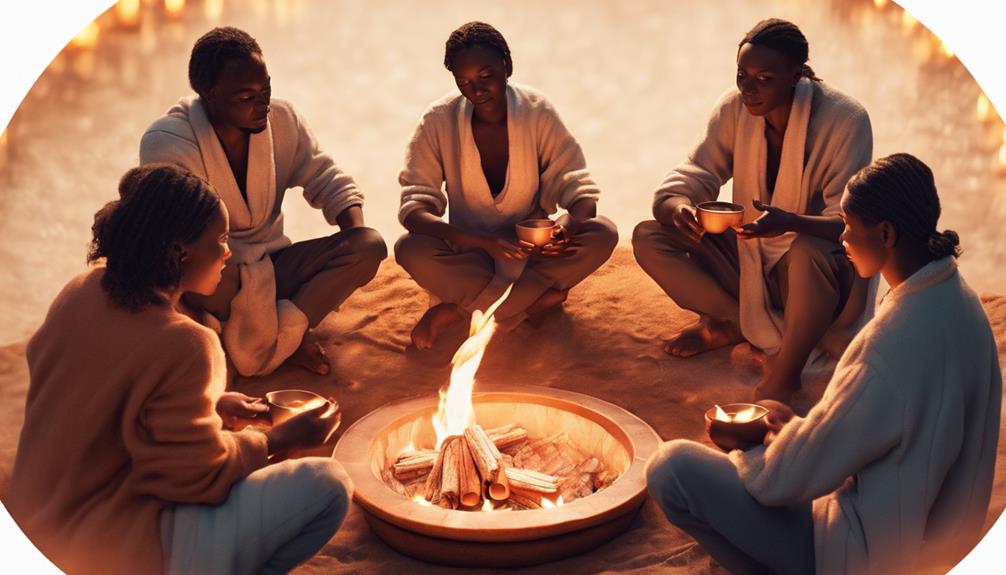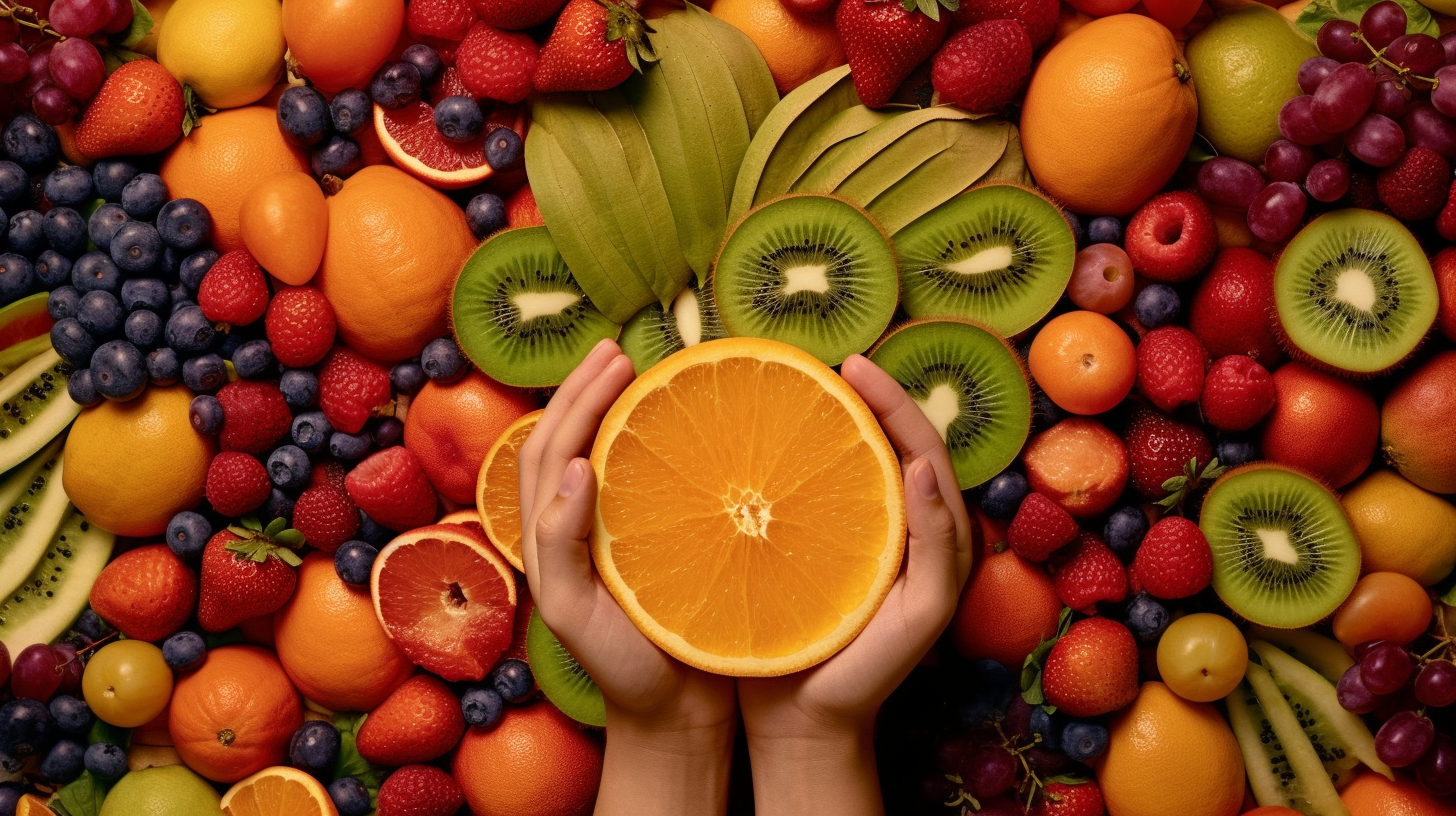The heart of a Cocoa Ceremony is rooted in its ancient origins and healing qualities. Emerging from Central and South America, this ceremonial tradition utilizes ceremonial-grade cocoa for therapeutic and spiritual purposes, helping individuals connect with deep wisdom and overall well-being benefits. Through participation in a Cocoa Ceremony, one welcomes transformative experiences that access ancient wisdom, fostering emotional release, clarity, intuition, and gratitude. To learn more about the spiritual importance, preparation procedures, and introspective reflections associated with a Cocoa Ceremony, delve into additional information on this captivating practice.
Key Takeaways
- Cocoa Ceremony embodies ancient wisdom and healing properties.
- It promotes emotional release, forgiveness, and heightened awareness.
- Ceremonial cacao enhances self-awareness and emotional balance.
- The ceremony involves setting intentions, reflection, and gratitude.
- Closing rituals honor the sacred connection with cacao and the transformative experience.
Origins of Cocoa Ceremony
In Central and South America, the practice of Cocoa Ceremony has its origins for both medicinal and ceremonial purposes. Ceremonial Cacao, as it's known, holds a significant place in spiritual practices. Ancient Mesoamerican cultures valued Cocoa not only for its health benefits but also for its spiritual significance. Shamans and healers would use ceremonial-grade cocoa in rituals to connect with the spirit world, seeking healing and guidance. This tradition has been passed down through generations and is now integrated into modern wellness programs.
The preparation of ceremonial cocoa is a sacred process. It involves grinding cocoa beans and mixing them with water, cacao butter, sweeteners, and spices like cayenne pepper and cinnamon. The resulting drink isn't just a beverage but a conduit for spiritual connection and healing. Ceremonial-grade cocoa is rich in antioxidants, magnesium, iron, fiber, and compounds that can enhance mood. Embracing the origins of Cocoa Ceremony allows us to tap into ancient wisdom and experience the profound benefits of this sacred practice.
Spiritual Significance of Ceremonial Cacao

Exploring the spiritual domain, ceremonial cacao embodies ancient wisdom and healing properties, revered by indigenous cultures for its sacred and feminine essence. The Spirit of Cacao is believed to reside within this sacred plant, guiding individuals towards inner reflection and connection with the divine. Below is a table that illustrates the spiritual significance of ceremonial cacao:
| Aspect | Significance |
|---|---|
| Sacred Rituals | Used in ceremonies for births, marriages, and battles, symbolizing unity and spiritual protection. |
| Healing Properties | Believed to offer physical, emotional, and spiritual healing, promoting overall well-being. |
| Connection to Self | Facilitates introspection, helping individuals explore deeper into their innermost thoughts and emotions. |
Embracing ceremonial cacao in a space of reverence allows one to tap into the profound energies it holds. By honoring the spirit of the cacao plant, we open ourselves to its transformative powers, fostering a deeper connection to our true selves and the world around us.
Benefits of Engaging in a Cocoa Ceremony
Engaging in a cocoa ceremony reveals a pathway to emotional release and forgiveness among participants. As we gather together and sip on the sacred cacao elixir, we enter a meditative state that allows us to let go of pent-up emotions and grudges. The cacao's energy works wonders, helping us release what no longer serves us and opening our hearts to forgiveness. Through this process, we create a space for healing and understanding, fostering a deep sense of emotional release that can be truly transformative.
In addition to emotional benefits, engaging in a cocoa ceremony can also lead us to a heightened state of clarity and intuition. The cacao's properties help quiet the mind and enhance our ability to tune into our inner wisdom, guiding us towards a better understanding of ourselves and our surroundings. This heightened awareness can bring about a sense of gratitude and connection, allowing us to experience heart-opening moments that leave a lasting impact on our lives.
Steps to Prepare for a Cocoa Ceremony

To prepare for a Cocoa Ceremony, start by gathering ceremonial-grade cacao, known for its purity and quality.
Set a clear intention for the ceremony to guide your experience and create a sacred space with meaningful items and symbols.
Mindfully prepare the ceremonial cacao, focusing on the process and energy, before engaging in meditative practices, reflection, and community sharing during the ceremony.
Ritual Significance Explained
In preparing for a Cocoa Ceremony, the initial step involves gathering ceremonial-grade cacao, cacao butter, water, sweetener, and spices like cayenne pepper and cinnamon.
Creating a sacred space is vital to set the right ambiance for the ceremony. This space should be peaceful, allowing for a serene and focused atmosphere.
Setting a clear intention for the ceremony is essential as it guides the energy and purpose of the gathering. Beginning with an opening that expresses gratitude and intention helps to establish the tone for the ritual.
As the ceremony concludes, it's important to ground the energy, express gratitude, and formally close the sacred space to honor the experience. These steps are integral to the ritual significance of the Cocoa Ceremony.
Gathering Ceremonial Ingredients
When preparing for a Cocoa Ceremony, the final step involves sourcing ceremonial-grade cacao from reputable suppliers known for quality and authenticity.
To enhance the ceremonial experience, it's essential to gather organic sweeteners like raw honey or maple syrup to complement the cacao's flavor.
Additionally, preparing sacred herbs or spices such as cinnamon, cayenne pepper, or cardamom can elevate the richness of the ceremony.
Lastly, incorporating high-quality ceremonial-grade cacao butter adds depth to the ceremonial drink.
Setting Sacred Intentions With Cocoa

Setting sacred intentions with cocoa is a powerful practice that involves infusing this sacred plant with our heartfelt desires. By expressing our intentions clearly and sincerely, we invite the spirit of cocoa to work with us in a ritualistic manner.
This intentional act sets the stage for a transformative and profound experience during the cocoa ceremony.
Sacred Intentions Explanation
How can one infuse their energy and focus with specific goals or desires during a cacao ceremony by setting sacred intentions?
Setting sacred intentions in a cacao ceremony is a powerful practice that allows you to align your energy and attention towards your deepest desires. Here's how you can do it effectively:
- Focus your mind: Clear your thoughts and concentrate on what truly matters to you.
- Visualize your intentions: Picture your goals as if they've already come to fruition.
- Speak your intentions aloud: Verbally express your desires to the universe and the spirit of cacao.
- Feel the emotions: Connect with the emotions associated with achieving your intentions to amplify their manifestation power.
Ritualistic Cocoa Practice
To immerse oneself fully in the practice of setting sacred intentions with cocoa, one must approach the ritual with a focused mind and a clear vision of their goals and desires. The sacred plant of cacao holds immense power to assist in this process.
By setting sacred intentions, one establishes a profound connection with the spirit of cacao, inviting its wisdom and energy into the ceremonial space. This intentional act serves as a guiding light, directing the flow of the ceremony towards personal growth and healing.
Each intention acts as a beacon, illuminating the path towards transformation and spiritual insight. Embrace the ritualistic cocoa practice with reverence and openness, allowing the essence of cacao to infuse your intentions with its magic.
Enhancing Self-Connection Through Cocoa

Enhancing self-connection through cocoa involves engaging in intentional rituals and practices focused on deepening self-awareness. When I sip ceremonial-grade cocoa, it opens my heart, allowing me to truly connect with myself on a deeper level. Here are four ways cocoa can enhance self-connection:
- Mood Enhancement: The compounds in ceremonial-grade cocoa can uplift my spirits and help me feel more emotionally balanced.
- Antioxidant Benefits: By consuming cocoa rich in antioxidants, I support my emotional well-being and overall health.
- Introspection: Through meditations and reflections during a cocoa ceremony, I can explore my inner thoughts and emotions.
- Personal Growth: Practicing gratitude, setting intentions, and embracing reciprocity during a cocoa ceremony can lead to profound self-discovery and growth.
Enhancing self-connection through cocoa is a beautiful journey of self-exploration and growth. By incorporating these practices into my cocoa ceremonies, I can deepen my relationship with myself and foster a greater sense of well-being.
Ritual Practices During a Cocoa Ceremony

Engaging in a cocoa ceremony involves honoring ancient traditions and fostering heart-centered connections through ritual practices. One of the key aspects of a cocoa ceremony is the act of setting intentions. This practice involves focusing on what you hope to gain from the ceremony, whether it be introspection, healing, or emotional release. By setting intentions, participants create a guiding purpose for their experience, allowing them to fully immerse themselves in the ritual.
During a cocoa ceremony, individuals engage in various activities that promote heart-centered connections. This includes meditation, reflection, and sharing with the community. These practices help to deepen the sense of connection not only with others but also with oneself and the spirit of cacao. Ceremonial-grade cacao is used in these rituals to honor the ancient Mesoamerican traditions that recognized the spiritual significance of cacao, further enhancing the sense of communal connection and reverence for the ceremony.
| Ritual Practice | Description |
|---|---|
| Setting Intentions | Focusing on desired outcomes |
| Heart-Centered Connections | Engaging in meditation, reflection, and community sharing |
Closing and Reflecting on the Cocoa Experience

Reflecting on the cacao experience serves as an important step in integrating the insights gained during the ceremony. As we close the cacao ceremony, it's essential to take time to reflect on the impact of this sacred ritual. Here are four key aspects to contemplate during this reflective process:
- Integration of Insights: Reflect on the emotions, thoughts, and visions that arose during the ceremony. Ponder how these experiences can be applied to your daily life.
- Grounding and Shifting: Use closing rituals to ground yourself and shift back to everyday life. Take deep breaths, feel your connection to the earth, and express gratitude for the experience.
- Sharing Experiences: Open up and share your experiences and insights with others present. This act of sharing can deepen the communal bond and offer different perspectives on the ceremony.
- Understanding Impact: Reflect on how ceremonial cacao consumption has affected your emotional and spiritual well-being. Acknowledge any shifts or revelations that have occurred within you.
Closing a cacao ceremony with gratitude and reverence honors the sacred connection with cacao and the transformative experience it provides.
Frequently Asked Questions
What Is the Point of a Cacao Ceremony?
The point of a cacao ceremony is to connect deeply with the spirit of cacao, set intentions, and experience its transformative powers. It's all about honoring the sacred attributes of cacao, seeking spiritual connection, and living from the heart.
What Is the Spiritual Meaning of Ceremonial Cacao?
The spiritual meaning of ceremonial cacao lies in its ability to foster deep connections, honor traditions, and facilitate emotional healing. It invites introspection, mindfulness, and a heightened sense of spiritual awareness and connection.
What Does Cacao Do to Your Body?
Cacao invigorates my body by boosting circulation and providing essential nutrients. It speaks to my emotions, empowering my heart and renewing my spirit. Cacao offers healing, soothing, or creative energy, depending on my intention and dosage.
What Is the Healing Ritual of Cacao?
The healing ritual of cacao? It's like a warm hug for my soul, melting away worries and opening my heart to the universe's whispers. Cacao's magic brings peace, clarity, and a deeper connection within.
Can I Use Ceremonial Cacao for a Cocoa Ceremony?
Yes, you can use ceremonial cacao for a cocoa ceremony. The ceremonial cacao recipe steps are essential to follow for an authentic experience. From selecting the right cacao to preparing it with intention, each step contributes to the sacred nature of the ceremony.
Conclusion
To sum up, the cocoa ceremony is a sacred practice with deep roots in ancient traditions. By participating in this ritual, we can connect with ourselves on a spiritual level and set intentions for personal growth.
The benefits of this ceremony go beyond just the physical, offering a unique opportunity for self-reflection and inner exploration. Consider incorporating a cocoa ceremony into your routine to enhance your connection with yourself and the world around you.

















